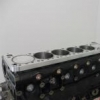First Time Engine Build. Rb25/30 Neo Advice
Announcements
-
Similar Content
-
Latest Posts
-
Yep, that was one of the things we learned fast in the past with our MX5. When you drive with the top down, you are effectively standing out in the sun, 100% of the time, and not getting in any shade (because roads aren't shaded generally!). Just like standing out in the middle of a field on a sunny 27C day is a bit of a bad plan, so is sitting in a MX5 without sun protection.
-
I also just ordered some Frankenstein bolts and side mounts to fit a hard top Just in case I do find one, basically so it doesn't need to be fixed to the car with only the front latch.......and then gaffa tape to keep it in place for the RTN journey from wherever I get it
-
If your temps are fine now, you probably won't have any issues with where your vents are as they don't look right up at the windscreens high pressure area, so any differences when giving it the beans for extended happy laps would be minimal, but, they should vent heaps when stuck in traffic Much like how that reverse cowl on my SS let "visible" heat out when stationary, but, because it was basically at the windscreen my coolant temps on the Hwy actually raised because air was being fed into it at speed (110kph), to only come back down to around 90° when I got off the Hwy And your 100% correct about the NC currently not needing vents, but, if I was to add a turbo, and a oil cooler and intercooler in front of the condenserand radiator, and then take it to the track???? It is apparently a recommend requirement if I don't want to worry about coolant or oil temp issues, but, any of the above are possible scenarios, over time As it sits now, with the triple pass radiator and stock air conditioning system, I have absolutely no issues with either temps or air conditioning efficiency, I've been basically daily driving thie car for the last month, both on the Hwy, and peak hour, bumper to bumper traffic, but, that's pretty much expected from basically a standard engine Talking about no issues daily driving, it was 39° the other day and I was sitting in bumper to bumper traffic on the M5 and then M7, with the top down, and with the air conditioning blowing nice cold air on my feet, balls, and face, well, there was one issue, my head and arms got pretty sun burnt Note to self: leave a hat and sunscreen in the car for such days 🤣
-
I would agree, unless you need something specific to the HV motor/battery side repaired or investigated, any mechanic will be able to perform normal services, but if you prefer, maybe look for a mechanic who regularly services/repairs Nissans, the VQ engines are pretty common in the Nissan lineup. Sorry, I can't make any suggestions, I don't live in Vic.
-
Some of them keep working fine. 9 out of 10 of them end up causing an absolute misery bleeding the system and get thrown on the workshop floor in a tantrum and never thought about again because they were never really needed and just added crap to the car that we could have done without. Same-same with HICAS, A-LSD, and various other stupidities that over eager 10x engineers thought we had to have.
-







Recommended Posts
Create an account or sign in to comment
You need to be a member in order to leave a comment
Create an account
Sign up for a new account in our community. It's easy!
Register a new accountSign in
Already have an account? Sign in here.
Sign In Now